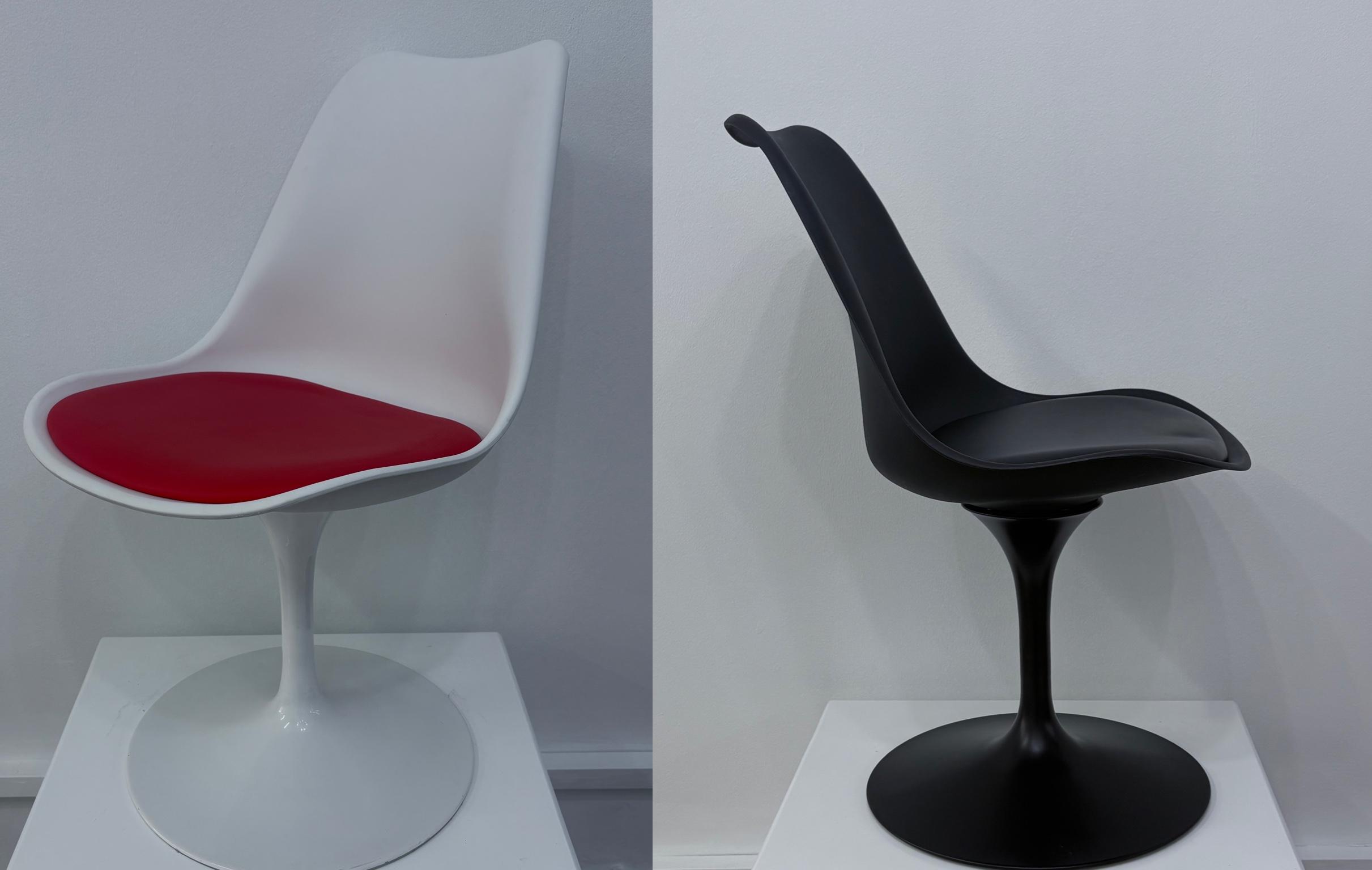Introducing Eero Saarinen, the Finnish-American architect and industrial designer known for his sleek yet futuristic style.
One of his most impactful pieces that he designed was the Tulip Chair, but you may wonder, what is so significant about its design? Interestingly, Saarinen, during the thought process of its design, was growing frustrated with what he called the “slum of legs” created by traditional chair designs, where both tables and chairs together created a cluttered look. His goal was to design a chair that had a clean, unified base.
To achieve this, he opted for a single unified pedestal base, often constructed from cast aluminum, paired with a fiberglass (or molded plastic) seat. He preferred this design because it made the chair visually lighter and more sculptural. The design is just one of the pieces in the Pedestal Collection, which includes tables and chairs that embody the same stem-like base. It truly is a hallmark of mid-century modern furniture, and its impact on pop culture made it iconic, as it appeared in the highly revered Star Trek movie as part of the futuristic design.
Now that we understand the history of both the creator and the chair he designed, let’s dig deeper to understand what makes the Tulip Chair so special beyond its design. Over the decades since its prototype, the chair has been developed and adapted with modern materials, finishes, and colours — such as the all-black (replica) version you see today. This adaptability has kept it relevant in both retro-inspired and contemporary interiors.
The gentle arc (curve) that supports the natural curve of your spine ensures better posture, particularly during long meals or work sessions. Combine that with a pedestal base that frees up legroom and a seat designed to cradle the body, and you realize that Saarinen didn’t just create a chair; he reimagined how furniture could shape a space, one pedestal base at a time.


